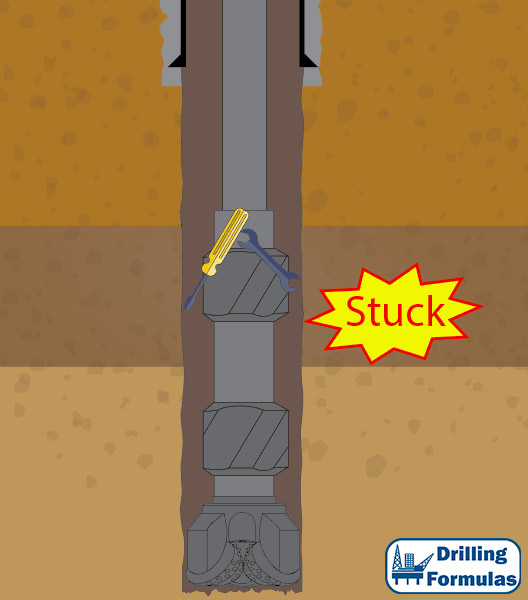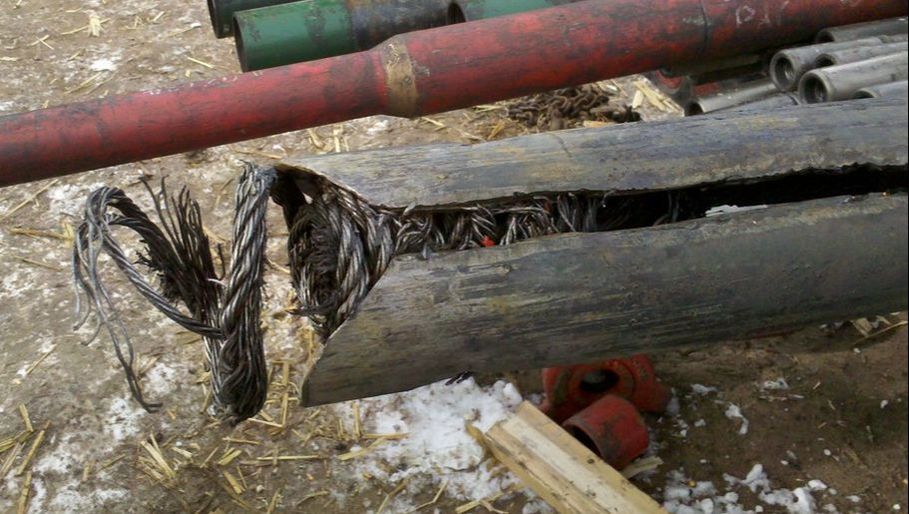In technical terms, a fish can be any object which has been lost or stuck in a borehole, and has a serious negative impact on well operations. Fishes can be anything, whether that is a drill string that has come away, a bit cone, or even a hand tool that has been inadvertently dropped into the well. To solve this issue, fishing involves the use of special tools and procedures to recover the fish and allow drilling to continue. While this article will deal solely with regular fishing, there is also an alternative method, which involves using through-tubing processes that make use of tools on a wireline or coiled tubing.

Virtually any object that is dropped into a well, or even run into it, may need to be fished out at some point. Furthermore, the need for fishing may arise at any given point during operations, and there are therefore a wide range of different tools and methods. There are three main technologies that these solutions are built around, though: pulling, milling, or cutting the pipe itself, and other downhole parts.
A fishing job is one option, but this will depend on the cost and likelihood of success. Other options include:
- Leaving the fish where it is, and sidetracking or redrilling the well to follow an alternative path
- Leaving the fish where it is, and completing the well in a shallower zone
- Abandoning the well altogether
Preferably, the fish should be completely avoided in the first place, thanks to the right planning and proper drilling practices. However, it is important that a contingency plan is in place should the situation arise.
Categories of Fishing Jobs
Although many different objects can get lost or stuck in a wellbore, fish can be divided into a few major categories.
Stuck pipe
The pipe can become stuck in the hole due to a number of different reasons, including key seating, mechanical sticking, differential sticking, and solids accumulation.
Read more details about stuck pipe here –http://www.drillingformulas.com/stuck-pipe-summary/and http://www.drillingformulas.com/category/stuck-pipe-2/
Parted Pipe
Usually, a drill string parting is caused by metal fatigue.

Figure 1 – Parted Drill String (Schulumberger 2013)
There are several types of fatigue failure, and they may occur simultaneously:
- Twist-off : Twist-off occurs when applied torque exceeds a pipe body or tool joint’s torsional strength limits. This failure usually causes a sudden loss of hook load, as well as a sharp drop in pump pressure. Twist-offs may occur when trying to rotate stuck pipe.
- Washout: Washout is when a hole is worn in the pipe, and becomes increasingly larger due to circulating drilling fluid. This can eventually sever or twist off the pipe entirely. Washouts usually occur at rotary connections, due to improper make-up, cracks or defective materials. From the surface, a washout may be indicated by a gradual decrease in pump pressure at constant pump rate. Read more details about wash out drill pipe case study here – http://www.drillingformulas.com/washout-drill-pipe-experience/
- Cyclic Stress Failure: Drill pipes can experience cyclic stress if they wear out after a great deal of use. Furthermore, corrosion or mishandling may lead to fatigue failure.
Junk

Figure 2 – Junk in hole causes stuck pipe.
Junk can consist of all manner of things, from bit cones and tong dies, to hand tools or other objects that have been accidentally dropped into the hole. Junk can cause irregular torque, or prevent drilling ahead after a new bit is run.
It might not even be necessary to recover junk, if it is small enough or in the right location, or depending on the formation hardness. Instead, the junk could be ground with the bit, or pushed to the side of a soft formation where it will not get in the way of drilling operations.
Cable and Wireline Tools

Figure 3 – Fishing Wireline in Hole, Dynastyenergyservices.net
For the same reasons that pipes become stuck, wireline tools can also become stuck. However, different fishing equipment is -needed in order to fish for these wireline tools. The main issue with wireline tools is the fact that cables can easily become tangled, or wadded in the hole itself. What’s more, fishing attempts could disconnect the wireline from the rope socket or part, which naturally makes tool retrieval a much more complicated task. One also needs to take into account safety and environmental factors, especially if the stuck assembly contains radioactive source material.
Fishing Challenges
In most situations, it is relatively simple to diagnose and resolve a fishing situation. For instance, should a bit torque up, and it is found that a cone is missing, then it will be clear that junk has been left inside the well. Alternatively, by looking at the recovered portion of a parted drill string, it is possible to calculate where the parting happened, and what caused it. These calculations allow for the right fishing tool assembly to be constructed, and for the rest of the string to be recovered.
However, that is not to say that all fishing jobs are easy and simple. It might be that as more information is gained about the fish, the more difficult the job becomes. For example, it is easy to diagnose where a twist-off has happened, but when pulling out of the hole, one may find that the pipe has a jagged edge, which makes it more difficult to use fishing tools to engage with the fish. It might also be the case that the fish is in the hole at an angle that makes it difficult to engage with. The fish might even have split into multiple pieces, making the recover operation much more complicated. For these reasons, fishing operations are not just dependent on what equipment and methods are used, but on the ingenuity and planning of drilling operators.
Planning and Preparation for Fishing Operation
By planning out the well carefully, and adhering to proper drilling practices, the need for fishing can be avoided in most cases. However, it’s impossible to completely eliminate the risk of fishing jobs. By assuming that something will eventually go wrong, drilling companies can be prepared for any eventuality.
To make the fishing job easier, it is vital that you have access to all relevant records of equipment in the well. Your records will need to contain the following information:
- A tally of your current drill pipe, including its weight, grade and tool joint specifications
- Information on the ensile strength of the pipe, as well as the rig’s hoisting capacity. This must include the maximum pull that the pipe can take based on these limitations, as well as necessary safety factors
- In-depth plans of the bottomhole assembly, with each tool’s length, inside and outside diameters, and rotary connections listed
- If you are using logging or surveying equipment, then you’ll need the dimensions of each tool used, along with the diameter and strength of the wireline
- A complete casing record, including all casing depths, diameters, weights and grades, perforation depths, liner tops and any other relevant information
- Up-to-date mud reports
The information needed for drilling can be obtained from a wide range of sources, including mud company reports, tour sheets, and tally books. It is the drilling engineer’s responsibility to ensure this information is readily available at all times, and should therefore put some of it together in a regularly updated notebook.
To minimize the amount of time needed for fishing, the tools and personnel required should be ready to go in advance. This means that the problem can be resolved in as little time as possible. In highly developed drilling areas, a fishing service company should be available to you around the clock. In more difficult to reach drill sires, operators should keep all the necessary fishing tools on-site, since the cost of storage will be outweighed by the lost time waiting for the tools to be delivered, and makes it more likely that the job will be completed quickly and successfully.
References
DeGeare, J. (2003). The Guide to Oilwell Fishing Operations: Tools, Techniques, and Rules of Thumb (Gulf Drilling Guides). 1st ed. Houston: Gulf Professional Publishing.
Jr. Adam T. Bourgoyne , Keith K. Millheim , Martin E. Chenevert , Jr. F. S. Young (1991). Applied drilling engineering textbook. (1991). 2nd ed. United States: Society OF PETROLEUM ENGINEERS OF AIME (TX).
Azar, J. and Samuel, G. (2008). Drilling engineering. 1st ed. Tulsa, Okla.: PennWell.
Johnson, E., Land, J., Lee, M. and Robertson, R. (2013). Landing the Big One – The Art of Fishing. [online] Slb.com. Available at: https://www.slb.com/~/media/Files/resources/oilfield_review/ors12/win12/3_fish_art.pdf [Accessed 12 Jun. 2018].
Dynasty Downhole Services. (2018). Sandline Fishing Pics & Case History. [online] Available at: http://www.dynastyenergyservices.net/news/fishing-sandline [Accessed 12 Jun. 2018].


